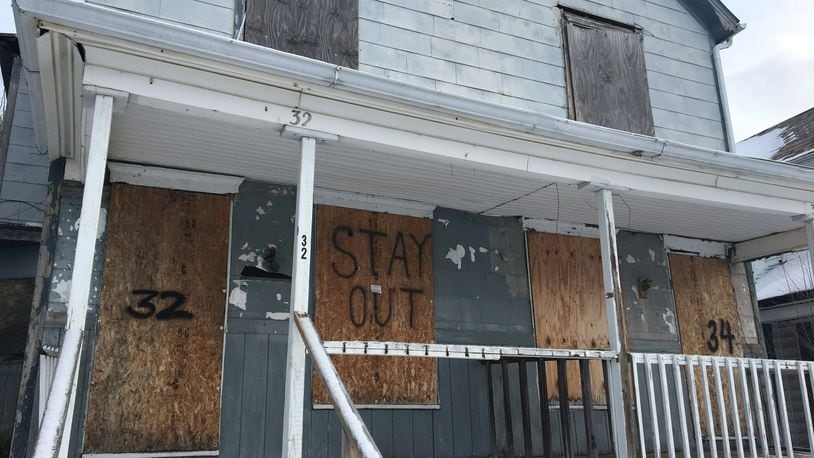About 220 of those properties are in the Westwood neighborhood and 78 are in Edgemont, according to city data.
The Westwood and Edgemont neighborhoods were hit hard by foreclosures and housing abandonment, but not as badly as other parts of the city.
The funding, however, is meant to help stabilize partially-healthy neighborhoods — and not very distressed ones — to prevent blight from spreading. Westwood is one of the largest Dayton neighborhoods.
"A demolition in what they call a 'tipping point neighborhood' would be a better use of resources — take out the bad one or two homes on a block rather than concentrate your resources on an area where you could literally demolish most or all of a block," said Tony Kroeger, Dayton city planner.
RELATED: Dayton neighborhoods with the most vacant structures
RELATED: Follow Staff Writer Cornelius Frolik on Facebook
Property acquisitions and demolition activities under the Neighborhood Initiative Program have taken place in about 28 Dayton neighborhoods.
But the bulk of properties acquired and demolished or targeted for elimination are located in half a dozen neighborhoods.
This includes 298 properties in Westwood and Edgemont combined, 68 in Burkhardt, 47 in Riverdale, 43 in Twin Towers and 40 in Wolf Creek, city data show.
The city has been awarded about $12.2 million in Neighborhood Initiative Funds to fight blight and the spread of foreclosures through the Montgomery County Land Bank. The land bank received an allocation from the state, which distributed the federal Hardest Hit funds to land banks across the state.
The city has received multiple rounds of funding, including about $5.1 million this summer and an additional $2.4 million several months ago.
The city hopes to remove about 740 blighted residential structures using the funds it has been awarded, of which 660 structures have been leveled or are being acquired to be eliminated. The vast majority of targeted properties come into the land bank’s possession through the tax foreclosure process.
Westwood, Edgemont and the other four aforementioned neighborhoods do not have the most vacant structures in the city, according to a citywide real estate survey, but they will receive the lion’s share of the funding.
Santa Clara is Dayton’s emptiest neighborhood, followed by Southern Dayton View and Roosevelt, the survey found.
But Westwood, Edgemont and the other largest recipients of federal funds are tipping point neighborhoods, which are semi-healthy areas that are at risk of unraveling because of growing numbers of foreclosures and falling property values.
The city identified areas to target using foreclosure and vacancy rates, tax delinquency data and other common housing indicators, said Kroeger, the city planner.
The city’s demolition activities have geographic balance, but focus on certain neighborhoods to maximize the impact of the program, Kroeger said.
The program requires the land bank or city to maintain the lots following demolition, which has helped improve neighborhood appearances.
“Everyone agrees that the removal of the properties, the seeding of the lot and the maintaining of the lot just makes a tremendous difference in the character of the neighborhood,” said David Bohardt, Dayton Plan Board member.
About the Author
